News from the 90th EAS Congress, Milan Italy: Monday 23rd May, 2022
The Monday Late Breaker session reported first in-human data with a novel monoclonal antibody targeting the angiopoietin-like protein (ANGPTL) 3/8 complex.1 ANGPTL 3, 4, and, most recently, 8 are well-characterised protein inhibitors of lipoprotein lipase, a critical regulator of triglyceride metabolism. ANGPTL8 is secreted in response to feeding and forms a complex with ANGPTL3; this complex inhibits lipoprotein lipase 100-fold more potently and circulates at much lower levels than ANGPTL3 alone.2 Thus, this complex represents a novel target for therapeutic intervention to manage elevated plasma triglycerides.
LY3475766, a monoclonal antibody against the ANGPTL3/8 complex was investigated in this randomized, double-blind, placebo-controlled study (NCT04052594) in 48 subjects with mixed dyslipidaemia (plasma triglycerides ≥135 mg/dL [≥1.5 mmol/L] and low-density lipoprotein cholesterol [LDL-C] ≥70 mg/dL [≥1.8 mmol/L]. Individuals received single ascending doses of LY3475766 either intravenously (10 mg and 30 mg IV; 6 subjects in each group) or subcutaneously (100 mg [n=6], 300 mg [n=12] and 600 mg [n=6]). As this was a first in-human study, the primary objective was safety; secondary endpoints included changes in lipids and lipoproteins with LY3475766.
At baseline, median plasma triglycerides ranged between 143 and 229 mg/dL, and median plasma LDL-C levels were between 134 and 155 mg/dL. Maximum triglyceride decreases from baseline were approximately 59%, 65%, and 70% with the 100, 300, and 600 mg doses; corresponding decreases from baseline in plasma LDL-C were 17%, 22%, and 37%. LY3475766 was generally well tolerated; there were no serious adverse events and no treatment-emergent adverse events preventing dose escalation. Two cases of mild injection site oedema and three cases of moderate injection site pain (one on placebo) were reported.
Overall, single dose administration of LY3475766 resulted in mean reductions in atherogenic lipoproteins (by up to 70% for plasma triglycerides, up to 61% for remnant cholesterol, up to 37% for plasma LDL-C, up to 36% in non-high-density lipoprotein cholesterol [HDL-C), and up to 31% in apolipoprotein B), together with up to 26% increase in HDL-C.
In concluding remarks, Dr Daniel Gaudet (Université de Montréal and ECOGENE-21, Québec, Canada) commented that inhibition of the ANGPTL3/8 complex with LY3475766 showed substantial reduction in plasma triglycerides and LDL-C, warranting further study.
In addition, Dr Nicholas Marston (TIMI Study Group, Brigham and Women’s Hospital, Harvard Medical School) presented an analysis of the TRANSLATE-TIMI 70 study, in patients on stable statin treatment and plasma triglycerides of 150-500 mg/dL and non-HDL-C ≥100 mg/dL.3 The study was designed to test higher doses of vupanorsen, an antisense oligonucleotide inhibitor of ANGPTL3, than that previously reported.4 Individuals were randomly allocated to treatment with vupanorsen: 80, 120, 160 mg subcutaneously every 4 weeks, or 60, 80, 120 or 160 mg subcutaneously every 2 weeks, or placebo. Overall, treatment with vupanorsen resulted in a broad range of ANGPLT3 inhibition, depending on dose, as well as 60-80% inhibition of plasma triglycerides, very low-density lipoprotein and remnant cholesterol. However, higher doses of vupanorsen were also associated with significant increases in liver enzymes and hepatic fat.
In a Science-at-a-Glance session,5 Danish investigators evaluated the impact of incorporating dietary assessment into 10-year absolute risk charts for cardiovascular disease. In a study of 94,321 individuals from the Copenhagen General Population Study, 10-year risk estimates including dietary assessment performed similarly to risk charts according to the SCORE2 model including non-high-density lipoprotein cholesterol.
Commenting on the study findings, Professor Frikke-Schmidt (Copenhagen University Hospital – Rigshospitalet, Denmark) suggested that the use of dietary assessment, rather than plasma cholesterol levels, in global risk charts may help in motivating the patient to adopt a healthy diet. Moreover, risk charts including dietary assessment could be readily adapted for use in general practice or in cardiology departments when determining the patient’s global cardiovascular risk, or when discussing lifestyle habits. Additionally, incorporation of dietary assessment into 10-year absolute risk charts has the potential to improve adherence with dietary guideline recommendations.
Improved implementation of national dietary guidelines is a cornerstone in prevention of cardiovascular disease.6 Risk charts that include a short dietary assessment can be used as a tool to change to a healthier, more sustainable diet. Such an approach has important implications, given that there are poor dietary habits accounts for 11 million deaths and about 50% of all deaths due to cardiovascular disease globally.7 Strategies such as these could help in implementing adherence to dietary guidelines and in improving general public health.
References
1. Gaudet D, Gonciarz M, Shen X, et al. A first in-human single ascending dose study of a monoclonal antibody against the ANGPTL3/8 complex in subjects with mixed hyperlipidaemia. Late Breaker Session 1, Monday 23 May, 2022.
2. Chen YQ, Pottanat TG, Siegel RW, et al. J Lipid Res 2020;61:1203-1220.
3. Marston N. Reductions in VLDL and remnant cholesterol through inhibition of ANGPTL3 protein synthesis: an analysis from TRANSLATE-TIMI 70. Late Breaker Session 1, Monday 23 May, 2022.
4. Gaudet D, Karwatowska-Prokopczuk E, Baum SJ, et al. Eur Heart J 2020;41:3936-3945.
5. Kjeldsen EW, Thomassen JQ, Rasmussen KL, et al. Impact of diet on 10-year absolute cardiovascular risk: a prospective population-based cohort study. Science at A Glance session 22.
6. Mach F, Baigent C, Catapano AL, et al. Eur Heart J 2020;41:111-188.
7. GBD 2017 Diet Collaborators. Lancet 2019; 393:1958–1972.

